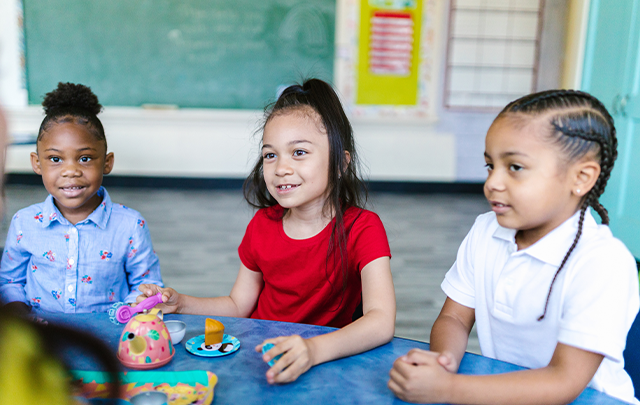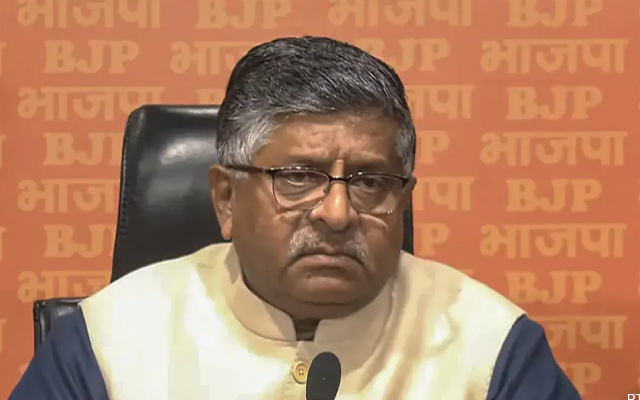‘This girl means serious business’ said Matt James, American television personality and a former football player. He also added “She went out there, she won it all in straight sets and got better in every match,” he said. As a television representative, he had been watching the games played by Emma Raducanu, the young and vivacious modern star in tennis. She started her winning spree by the time she was twelve and before she had finished her teens, she won the US Open for women.
The British subject was born in Canada to a Romanian father and a Chinese mother. Her family moved to London when she was just two years old. Thus, four countries take pride in her achievements. She turned a professional player in 2018. She is the youngest British player in sixty-two years to reach the present level that she held on to at the Arthur Ashe Stadium at the US Open. She is also known for losing the fewest games played by a woman since Serena Williams, Serena lost only thirteen. At a press conference, she spoke about how she won her confidence to play and reach this level because of her feeling that she was ‘a part of the whole world’.
It is interesting to note that the opponent in the US Open for Emma Raducanu was Leylah Annie Fernandez who was born in Montreal to an Ecuadorian and a Canadian of Filipino descent. At eighteen, she was the youngest player who won without dropping a set during the WTA title of 2021. She defeated three of the top five seeds at the US Open to reach the finals to play against Emma Raducanu. She, of course, lost to the latter.
Being ‘a part of the whole world’ is the issue for both the young women from their parenting and also the places where they were born and lived later. Both the young women have this in common, born to parents who are from different countries and now living in a totally different place. At this point, one has to ask how many of us will be able to say that we are ‘a part of the world’. Globalism has brought not only just the feeling of one world but also cosmopolitanism in the culture of living of large numbers of people.
It may be necessary to describe a background picture of patriotism, nationalism and regionalism if one wants to understand what Raducanu meant by stating that she was ‘a part of the world’.
Till the advent of democracy, patriotism was an important part of a human’s existence on earth. Kings and queens believed in patriotic people who would be willing to lay down their lives due to sheer love for the country at times of war that occurred at the whims and fancies of the ruler. Even the parents of such patriotic people would feel proud that their children had sacrificed their lives for the sake of their motherland. The country was the mother from whom they came and for whom they had to sacrifice their lives. Nobody ever bothered whether the kings or queens would sacrifice their lives for the country while they expected their subjects to surrender their lives at the feet of their motherland.
Nationalism was not a predominant concept till the end of the eighteenth century. Democratic nations, these days, speak about nationalism as a civic virtue and which believes in a single national identity. Nation as a state is important and as the license for belonging to a nation state, a citizen has the responsibility to hold up national values unlike in kingdoms where there were only two values, patriotism and loyalty to the ruler. Nationalism demanded an understanding of cultural values of the nation state. It therefore both promoted and protected them with an attachment to national traditions and customs. A sense of attachment to the cultural inheritance became the polished stone on which everyone stood to preach about the rituals involved in such inheritances. Nationalism promoted a sort of pride bordering on limitations of nationhood and promoted, though not directly, a sort of enmity with other nations who held different values, traditions and customs.
Regionalism is a word denoting promotion of one’s own region. It is an accepted norm in a democratic society under a condition that it is acceptable for autonomous functioning of lower levels of governance. After all, a member of any legislative body is a representative of the people of a particular region. It becomes her responsibility to make sure that a share of the national wealth is made available to the region and the people who elect her to the body, get satisfied with such sanctioned wealth. Undoubtedly, people believe that the region has to develop and that it is their right to speak for the region. The difficulty with regionalism is its demand for everything to come to the region even when other regions may not have anything worthwhile. Federalism functions well with specifically defined regionalism and its practical functions. US is a federal republic where each state has its own rules except for areas like foreign policy. So, federalism means a single nation with several states as its units with plenty of power for regional governance.
These three concepts have been discussed with a view to bring home to the readers, who are parents, the idea of making their children ‘a part of the world’ by creating pluralistic minds in them. Children face influences of patriotism, nationalism and regionalism as models projected by the elders. There are disadvantages of an absolute impact of these, in the sense that children can fail to accept people from other parts of the world. Even when the children are from different states of a federal republic like ours, it can happen that the Indians from different states may not be able to accept each other unless pluralistic attitudes are built in childhood itself. Pluralism demands an understanding of unity of different parts of a nation or the world itself, including different groups of people. Considering that modern youth get employed in different parts of the world, it is necessary to build a pluralistic view of the whole world, a concept beyond patriotism, nationalism and regionalism. Only then they will be able to live in that part of the world, creatively and peacefully and obtain employment as well. Such pluralistic views will allow them to live with local public, their traditions, customs and other cultural symbols. While being proud of one’s own nation or region, one also has to feel proud of the place in which one works and the people with whom one works.
In the initial stages, our institution coined two slogans, one for the larger members of the institution and another for individuals. They were ‘Towards A More Humane and Enlightened Society’ and ‘Building People’ respectively. Here, it is necessary to restrict to ‘building people’, especially children who are growing up in the midst of modern pressures of patriotism, nationalism and regionalism. Will all children be able to make a statement, alongside Emma Raducanu, that they are ‘a part of the world’?
The major problem modern children face is the question of the confusions that arise from persuasions to accept religion, culture and language, preferably those of the parents, without any option otherwise. The world outside them is multitudinal in their dimensions of influence processes, some of which happen without the knowledge of children or their parents. Children have plenty of questions for which, sometimes, there are no answers that the parents can provide. The world, as the children keep growing, is available to them on their fingertips now. They are at cross purposes with their parents’ knowledge of the worlds of religion, culture and language. There are occasions when attitudes of parents and children have head on collisions. Children may duck under, either because of the respect for parents or because of their dependence for their financial needs on the elders.
Indian children born and brought up in foreign countries speak not only their Indian mother tongue but also the language of the country where their parents work. They are generally multi-lingual. Natural enough, the use of the language and nearness to people who speak that language also gives them a chance for inculturation. They may not give up the culture of their mother country. However, just as they accept the langue of the country from which they migrated, they also accept the culture of the country of their living. This happens more because of schooling and mixing with the society that exists around them. Having only one language to function with reduces the possibilities of inculturation and such children brought up in the use of a single language will have plenty to lose.
Mumbai has an interesting food and everyone who lands in Mumbai or even in the suburbs will enjoy eating their food. I refer here to Vada Pav. Vada is a South Indian item of food and ‘Pav’, originally Portuguese for bread, is European. It is a strange combination of South Indian and international food items. Undoubtedly, it is one of the finest examples of products of inculturation. In most of the restaurants in Southern India, Punjabi food is available, of course it is called North Indian food, and the South Indians enjoy them. One of the fair example in inculturation is the popularization of salwar and kameez, a North Indian dress, in southern regions of our country. Similarly, the trouser and shirt of the western civilisations are common to young girls, even among ladies, these days. One may not see a long skirt and blouse as a dress of the South Indian girls these days. Inculturation not only happens with the type of life one leads but also through the type of food one eats or type of clothes one wears. More importantly, inculturation happens when cultural activities are organised with the activities deliberately chosen from different cultures.
Amicable religiosity allows children to grow into a multi-religious society. There is no doubt, after culture and language, religion is the strongest force that one has within oneself. Children need to be developed in their parent’s religion for the beneficial reason that it is the easiest to develop faiths and associated rituals of any religion. When children are brought up with conceptual clarity on the religion of the parents, it becomes easy for children to accept such a religion, its tenets and various rituals associated. However, this can go into a personal danger when a child who is growing up does not understand the tenets of other religions of other children with whom they are associated. Children need to learn to respect religions of other children first. Though atheists have provided to the world that they are in no way lesser in peace loving than those religious, the world has several religions which leads people to one god. So, it is important that children understand that though there will be religious differences, all are children of a similar god though represented by different religions. Such thoughts will influence the children to accept other children from other religions, subsequently do the same in the adult world too, and live with others peacefully. This amicability in religiosity is essential in a multi religious, multi-cultural, multi linguistic world which is broad enough to include all countries in the world. Different peoples, different nations, different religions, different languages and different cultures have become close to one another in the modern world of travel, internet and other digital facilities.
The best time for parents to influence and develop children’s attitudes is the collective eating time. Also, any children’s assembly around the parents during celebrations or return-reporting time of parental visits to people or places, discussions on newspaper reports or on books, or, evaluations of programmes or functions attended will provide parents a golden opportunity to influence cultural, linguistic and religious attitudes of the children. The more the parent is aware of the need to care for the development of their children around these, the greater is the chance for children to believe that they are ‘a part of the world’.
Collectedness is a higher state of an individual self where she knows how to remain calm and controlled at times of distress or discord. The private individuality of a grown up becomes acceptable to others because of the ways in which that person calmly or in a controlled way deals with any situation. This collectedness indeed is the product of childhood experience with regard to culture, language and religion. Distress or discord associated with excessive attraction to any or all three, can destroy the peace of any group of people or any area of a nation. Peace formed from the co-existence of different cultures, different languages and different religions is the one that creates collectedness in an individual. This creative fervor with calmness and control, the collectedness indeed, is developable and it is done best at childhood.
Indulging in inculturation, promotion of multilingualism, formation of amicable religiosity and developing associated collectedness through the connectedness are strategies for making children feel that they are ‘a part of the world’. Indeed, it is easily said than done. It needs a resolution in the parents’ mind to allow a child to grow into becoming ‘a part of the world’. Such a resolution should lead a parent to discover strategies, identify methods and select techniques for creating a synthesis of culture, multilingualism, amicable religiosity and associated collectedness. It is easy for any parent to develop one’s own culture or attraction to one’s own religion or use of one’s own language. However, this can result in the ‘building’ of an individual child into a sort of a cocoon from which it can never fling free. The resultant effects may or can be one of disaster in the form of inability of the child after growing into an adult to live in a multipolar world of different cultures, religions and languages.
Tailpiece. Factually and objectively personal. I was born in a state, studied in another state and worked in a third state. My son works in India and travels abroad frequently as part of his work. My elder daughter works in the United Kingdom. She initially studied in Mangaluru, then at Chennai and thereafter in Scotland for her specialisation. My younger daughter works in the United States. She studied initially in Mangaluru, then at Chennai and thereafter at Bangalore for her postgraduation. None of my grandchildren speak my mother tongue. My only daughter-in-law has a different mother tongue which I don’t speak. My elder son-in-law has a South African background, though born in India, as his father was employed there. My younger son-in-law is from Himachal Pradesh and has Hindi as his mother tongue. All my three children speak Hindi fluently. All of us are at ease with different religions, languages and representations of culture.
Modern families need acceptance of different cultures, use of different languages and respect for multiples of religions. Such families not only live creatively and peacefully but also contribute to the well-being of those others around. Children need to be brought up with developed faculties with a world view of facilities available for human interactive living.
Image source Rodnae Production by Pexels



















